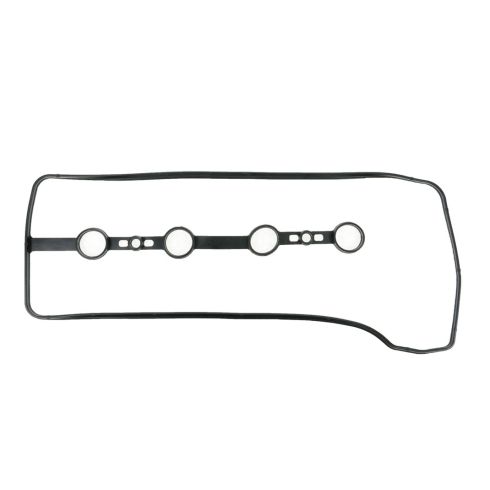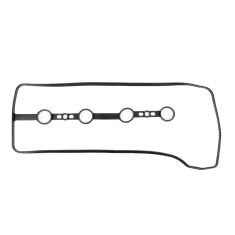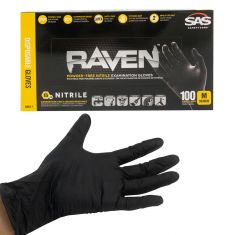1AEGS00177-Toyota Pontiac Scion Valve Cover Gasket Set TRQ SGA11398

Replaces
2007 Scion tC Valve Cover Gasket Set TRQ SGA11398

Frequently bought together
Product Reviews
Loading reviews
4.80/ 5.0
20
20 reviews
Fit for 2004 toyota
August 13, 2019
Fit for 2004 Toyota Highlander FWD 2.4L engine.
Not a good fit
November 5, 2019
Purchased for my 2009 Toyota Camry. The fit was very loose and the gasket fell out whenever I turned over the valve cover to install it. Got one from the local auto parts store and it fit much better. Wasn't worth the $4 in savings.
September 17, 2021
So far so Good! Thxs
October 20, 2021
Good fit on my Scion
Great experience
April 22, 2022
Perfect fit. But I shouldnt be surprised. 1A Auto website is very easy to find the perfect fit for whatever part being replaced.
Perfect fit
October 25, 2022
Part arrived quickly and fit my 2009 Toyota Camry LE perfect. Gasket has a hard time staying seated in the intake cover. I used a little bit of gasket silicone adhesive and it held in place while I lined up the cover and tightened down
December 1, 2022
Easy to install
Ralph G.
December 4, 2022
Great products and great service
December 16, 2022
Fit the 2004 Camry 2.4 L perfectly and stopped the oil leak. Easy to install with the online video.
February 11, 2023
Good product
Good product.
March 8, 2023
Good product. Fit my 2004 Highlander 4-cyl quite well. Leak stopped. Appreciated the yt video on installation. You should post it on rumble and bitchute as well.
Perfect for my car!
May 15, 2023
It was perfect fit for my car. Quality was good too. And I like the price. Not pricey for what I could have paid if bought at the auto shop. Am happy with it. If yiu are thinking of buying one, do it because it's as described. Am sorry I forgot to take a photo of before and fter but all is good!
Wonderful
May 23, 2023
Description perfect
Fit perfect
I have a 2005 Toyota Camry.
Great part.
September 13, 2023
Great part fits perfect!
September 22, 2023
I watched the video how to installed it was easy
Perfect fit!
October 27, 2023
It is such a nice thing, when parts fit easily and perfectly.
Very nice people to deal with at 1AAuto
Super cool
January 28, 2024
Fits right in place perfectly thanks
February 18, 2024
It was a very good gasket
March 30, 2024
Excellent
[{"url": "https://wac.edgecastcdn.net/001A39/prod/media/pNISJll75W64CYGsite/30204d451fd6063cfe6c9c1fb671220f_1727016194482_0.jpeg", "caption": "To be safe choose quality TRQ is quality great products"}, {"url": "https://wac.edgecastcdn.net/001A39/prod/media/pNISJll75W64CYGsite/85c1696e7d838cb19d4bac2196bd3e20_1727016194482_1.jpeg", "caption": "The best I love the quality"}]
September 22, 2024
The gasket is a great quality
Customer Q&A
Please will you bring your business to Namibia?
March 19, 2022
10
Hello, I apologize we currently do not ship to Namibia, you could try ebaymotors.com.
March 19, 2022
Ricale A
I have a 3.5 RAV4 that fit?
July 4, 2022
10
This part will not fit your vehicle, but we may have a part that is listed to fit.
Please enter your vehicle's year make and model in the search bar at the top of the page. This will display parts guaranteed to fit your vehicle. Just be sure to verify all of the information shown in the Vehicle Fit tab before ordering.
July 5, 2022
Ricale A
Does it come with spark plug tube seals?
November 30, 2022
10
No
November 30, 2022
Michael C
10
No, this does not come with spark plug tube seals.
November 30, 2022
Kelly S
10
No
December 1, 2022
Duc N
Will this gasket also fit the 2.0L on a 03 rav 4?
March 19, 2023
10
No, this part will not fit and we currently do not carry the one you need.
March 20, 2023
Andra M
Scion is a registered trademark of Toyota Motor Corporation. 1A Auto is not affiliated with or sponsored by Scion or Toyota Motor Corporation.
See all trademarks.








